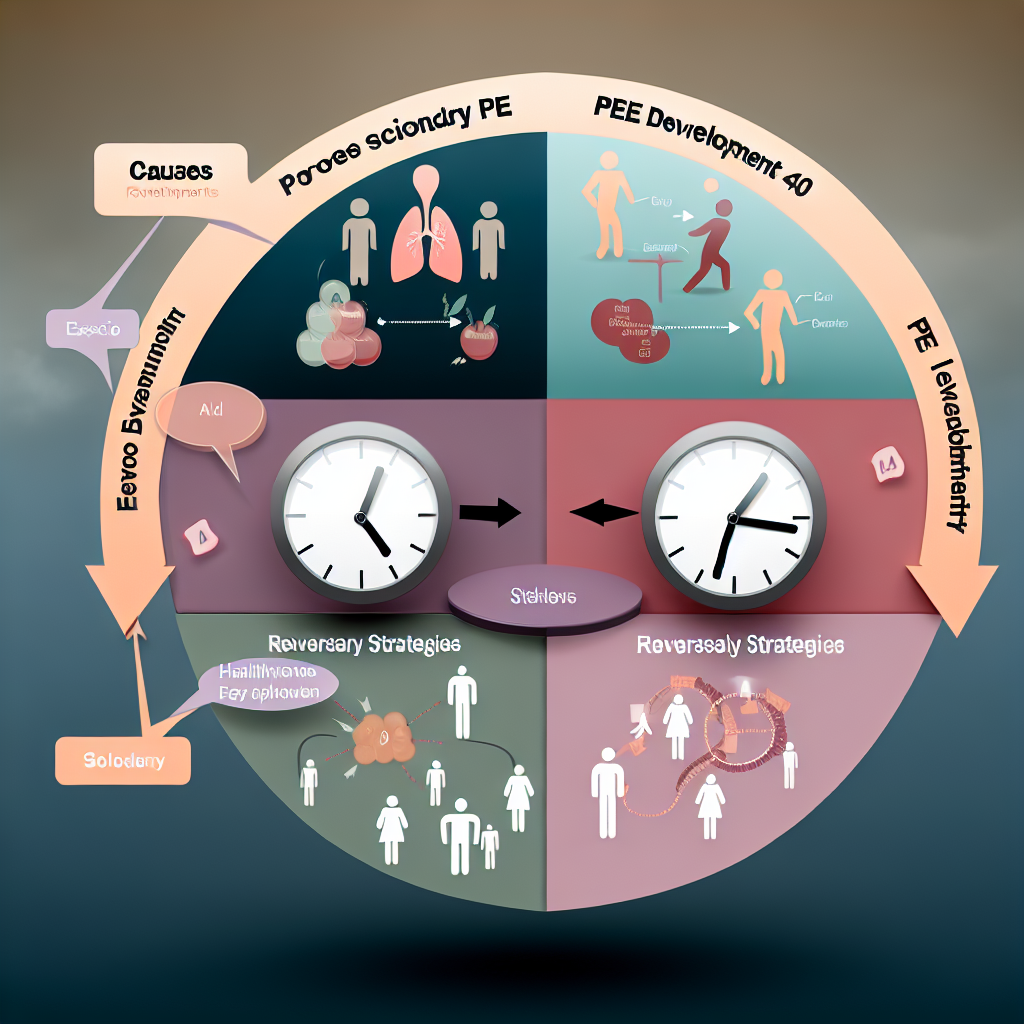Breathwork Techniques for Stress and Energy
Introduction
Modern life often floods us with overwhelming levels of stress, fatigue, and mental clutter. Whether you’re a teenager managing school pressure, a working professional juggling deadlines, or a senior facing the challenges of aging, **stress** can accumulate and **energy levels** can plummet. For men seeking non-medicated solutions to these problems, **breathwork techniques** are emerging as a powerful, accessible tool.
**Breathwork** involves deliberately controlling your breathing patterns to influence your emotional, physical, and mental state. This practice spans ancient traditions—from yogic pranayama to breath-focused martial arts—and continues to gain momentum today. Top performers like athletes, entrepreneurs, first responders, and medical practitioners champion breathwork for its ability to boost focus, reduce anxiety, enhance endurance, and improve vitality.
Unlike pharmaceutical fixes or complex self-care routines, **breathwork is accessible anywhere**—whether you’re at your desk, in bed, or walking in the park. Its transformative power lies in its ability to impact the **autonomic nervous system**, helping you shift from stress (sympathetic state) to relaxation (parasympathetic state), or increase alertness when needed.
From young adults struggling with **academic anxiety**, to professionals facing **burnout**, and seniors desiring **peace of mind** and physical stability, breathwork stands as a universal, no-cost practice for better health. With no equipment needed and immediate results possible, learning to master your own breath may be one of the most important investments in your lifelong well-being.
In this article, we introduce proven **breathwork techniques** for relieving stress and building energy, review the science supporting them, and offer clear instructions you can follow daily—no matter your age or lifestyle.
Scientific Features and Benefits of Breathwork
The advantages of **breathwork for stress relief** and **energy enhancement** go far beyond anecdotal wisdom; modern science is now confirming these effects through robust studies.
One foundational technique is **diaphragmatic breathing** (also known as belly breathing). This involves engaging the diaphragm to breathe deeply and slowly. A 2017 study in the journal Frontiers in Psychology found that participants who practiced diaphragmatic breathing twice daily for eight weeks experienced significant reductions in cortisol levels—the primary hormone linked to stress. The study also noted improvements in sustained attention and reduced emotional negativity, suggesting powerful mental and emotional benefits. [Read the study](https://www.frontiersin.org/articles/10.3389/fpsyg.2017.00874/full)
Another major technique is **Box Breathing**, which is frequently used in high-stress military training. This method involves equal-length breathing phases—inhaling, holding, exhaling, and holding again, usually for four seconds each. According to a 2020 meta-analysis in the journal Psychological Health & Medicine, box breathing helps regulate the **autonomic nervous system** by encouraging parasympathetic (rest-and-digest) activity. It’s particularly helpful in managing anxiety and improving emotional control in high-stakes situations. [Explore the source](https://www.tandfonline.com/doi/abs/10.1080/13548506.2020.1835255)
The **Wim Hof Method**, which combines structured hyper-breathing and breath retention, has also drawn scientific attention. A 2014 study found that subjects practicing this method demonstrated elevated **adrenaline levels**, lower **inflammatory markers**, and improved **oxygen utilization**. These changes were linked with greater physical and psychological resilience, making this technique ideal for those needing an energetic boost. [See the study](https://www.pnas.org/content/111/20/7379)
Other psychological benefits include improved **focus**, better **sleep quality**, and reduced **PTSD symptoms**, supported by neuroimaging research indicating increased alpha and theta brainwaves during regular breath-based practices. These brainwaves are associated with relaxed awareness and can help reset an overwhelmed nervous system.
In sum, breathwork is a validated approach for rebalancing your physiological and mental state, ideal for addressing the widespread stress, energy loss, and cognitive demands of modern life.
Top Breathwork Techniques for Stress and Energy
1. Diaphragmatic (Belly) Breathing
Best for: Beginners, chronic stress, mental calm
How to do it: Sit or lie down comfortably. Place one hand on your chest and the other on your belly. Inhale slowly through the nose so that your belly rises under your hand. Exhale gently through the mouth, feeling the belly contract.
Duration: 5–10 minutes, 2–3 times daily
2. Box Breathing
Best for: Stressful situations, improving concentration
How to do it: Inhale for 4 seconds → Hold 4 seconds → Exhale 4 seconds → Hold 4 seconds → Repeat.
Duration: 3–5 minutes, ideal before a big meeting, exam, or workout session
3. Wim Hof Technique
Best for: Morning energy, immune system support
How to do it: Perform 30 quick deep breaths (inhale powerfully, exhale relaxed), then hold your breath after the last exhale as long as possible. Inhale fully to recover, hold for 15 seconds, and repeat 3 rounds.
Duration: 10–15 minutes
Note: Only perform while seated or lying down—never while driving or swimming
4. 4-7-8 Breathing
Best for: Anxiety, falling asleep faster
How to do it: Inhale through the nose for 4 seconds → Hold breath for 7 seconds → Exhale slowly through the mouth for 8 seconds
Duration: 4–5 cycles before bed or during moments of acute worry
5. Alternate Nostril Breathing (Nadi Shodhana)
Best for: Balancing energy, promoting mental clarity
How to do it: Sit comfortably. Using your thumb and forefinger, close one nostril as you inhale deeply through the opposite side. Alternate nostrils with each inhale and exhale cycle.
Duration: 5–10 minutes. Particularly beneficial as a midday mental reset.
Conclusion
**Breathwork** is a practical, scientifically validated tool for reducing stress and boosting energy—ideal for men at all stages of life. Unlike complicated routines or costly therapies, breathwork is free, convenient, and can be done anywhere. Whether you’re managing a tight schedule at work, coping with emotional challenges, or aiming to stay mentally sharp as you age, conscious breathing offers a foundation of resilience and balance.
Even just a few minutes of **intentional breathing** each day can lead to better focus, relaxed sleep, a stronger immune system, and clearer emotions. As breathwork becomes more integrated into medical and wellness practices, its credibility and effectiveness continue to rise. Start small and be consistent—your breath may be the most powerful untapped resource you already possess.
References
– Ma, X., Yue, Z.-Q., Gong, Z.-Q., et al. (2017). [The effect of diaphragmatic breathing on attention, negative affect and stress in healthy adults. Frontiers in Psychology](https://www.frontiersin.org/articles/10.3389/fpsyg.2017.00874/full)
– Telles, S., Singh, N., & Balkrishna, A. (2020). [Mental health benefits of yoga, pranayama, and meditation. Psychology, Health & Medicine](https://www.tandfonline.com/doi/abs/10.1080/13548506.2020.1835255)
– Kox, M., et al. (2014). [Voluntary activation of the sympathetic nervous system and attenuation of the innate immune response in humans. PNAS](https://www.pnas.org/content/111/20/7379)
– Khalsa, S.S., & Davidson, R.J. (2015). [Brain, body and breath: The neuroscience of interoception and breathing-focused practices. Annals of the New York Academy of Sciences](https://nyaspubs.onlinelibrary.wiley.com/doi/full/10.1111/nyas.12994)
Summary
**Breathwork** is a scientifically backed method for reducing stress and increasing energy in men of all ages. By manipulating breath patterns such as diaphragmatic breathing, box breathing, and the Wim Hof method, individuals can influence their nervous system, lower cortisol, and enhance focus, endurance, and emotional control. These techniques are effective, easy to implement, and require no equipment. Whether you need to manage anxiety, find better sleep, or stay energized, breathwork offers a convenient and powerful solution for long-term well-being and resilience.

Dominic E. is a passionate filmmaker navigating the exciting intersection of art and science. By day, he delves into the complexities of the human body as a full-time medical writer, meticulously translating intricate medical concepts into accessible and engaging narratives. By night, he explores the boundless realm of cinematic storytelling, crafting narratives that evoke emotion and challenge perspectives. Film Student and Full-time Medical Writer for ContentVendor.com




